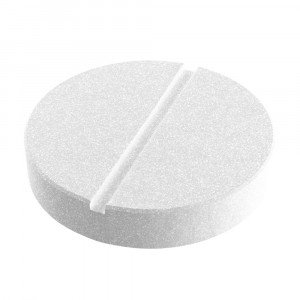 Welcome
Welcome
“May all be happy, may all be healed, may all be at peace and may no one ever suffer."
- A
- B
- C
- D
- E
- F
- G
- H
- I
- J
- K
- L
- M
- N
- O
- P
- Q
- R
- S
- T
- U
- V
- W
- X
- Y
- Z
Ruxolitinib - Brands
Ruxolitinib, a kinase inhibitor, inhibits Janus Associated Kinases (JAKs) JAK1 and JAK2 which mediate the signaling of a number of cytokines and growth factors that are important for hematopoiesis and immune function. JAK signaling involves recruitment of STATs (signal transducers and activators of transcription) to cytokine receptors, activation and subsequent localization of STATs to the nucleus leading to modulation of gene expression. Myelofibrosis (MF) is a myeloproliferative neoplasm (MPN) known to be associated with dysregulated JAK1 and JAK2 signaling. Oral administration of ruxolitinib prevented splenomegaly, preferentially decreased JAK2V617F mutant cells in the spleen and decreased circulating inflammatory cytokines (eg, TNF-α, IL-6).
Absorption: Ruxolitinib is rapidly absorbed after oral Ruxolitinib administration with maximal plasma concentration (Cmax) achieved within 1 to 2 hours post-dose. Oral absorption of ruxolitinib was estimated to be at least 95%. Distribution: The mean volume of distribution of ruxolitinib at steady-state is 72 L in patient with MF and PV in myelofibrosis patients.
Half-life: the mean half-life of ruxolitinib & metabolites is approximately 5.8 hours. Elimination half-life: The mean elimination half-life of ruxolitinib is approximately 3 hours AUC: Mean ruxolitinib Cmax and total exposure (AUC) increased proportionally over a single dose range of 5 to 200 mg.
The plasma protein binding: 97%, mostly to albumin. Metabolism: Ruxolitinib is metabolized by CYP3A4 and to a lesser extent by CYP2C9.
Excretion: Following a single oral dose of radio labeled ruxolitinib in healthy adult subjects, elimination was predominately through metabolism with 74% of radioactivity excreted in urine and 22% excretion via feces. Unchanged drug accounted for less than 1% of the excreted total radioactivity.
To be happy, beautiful, healthy, wealthy, hale and long-lived stay with DM3S.
